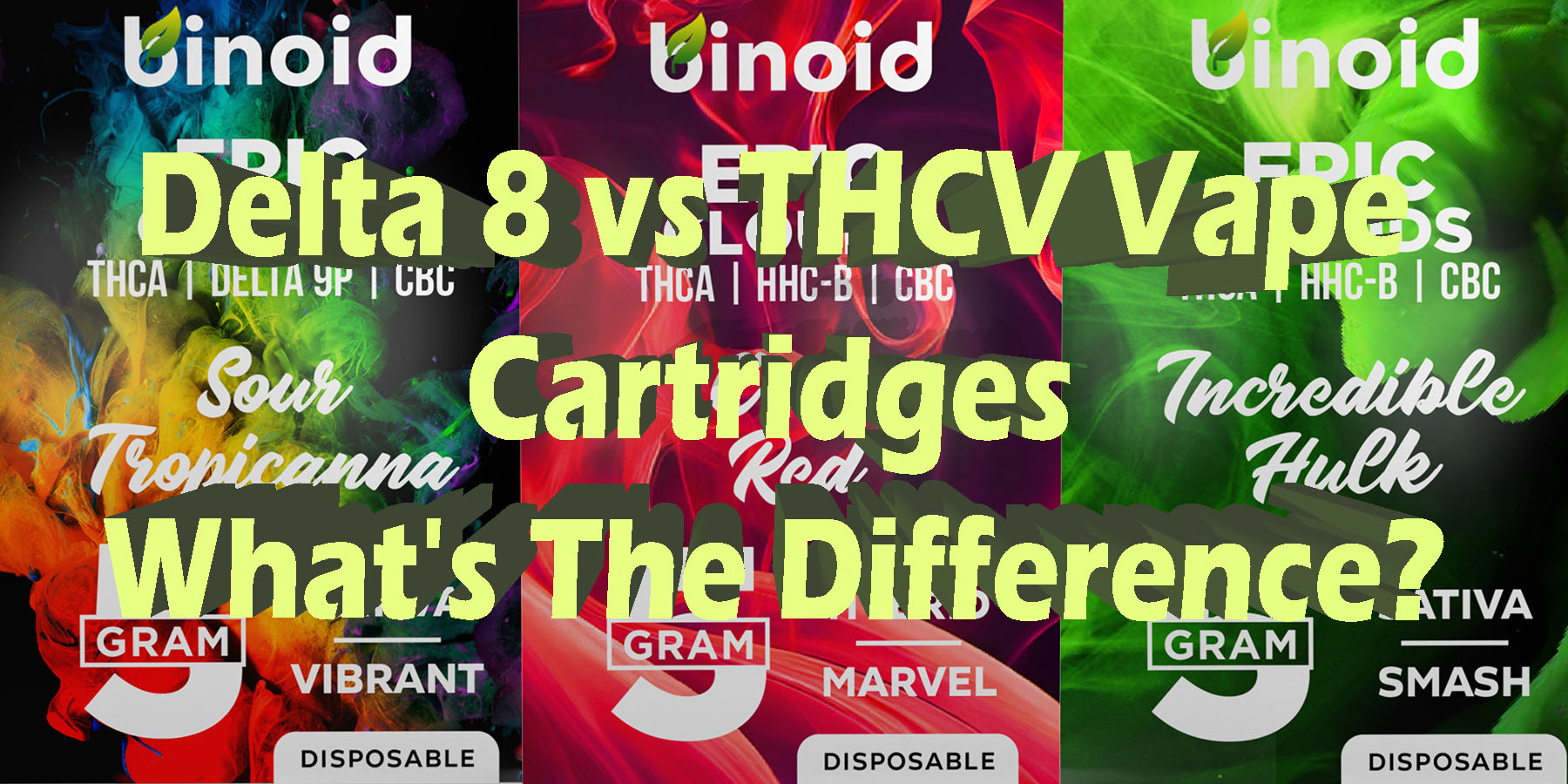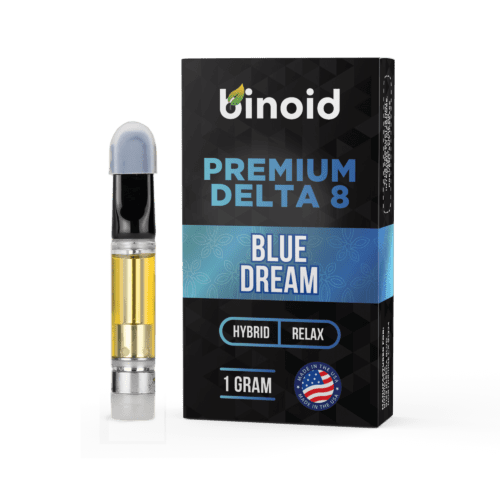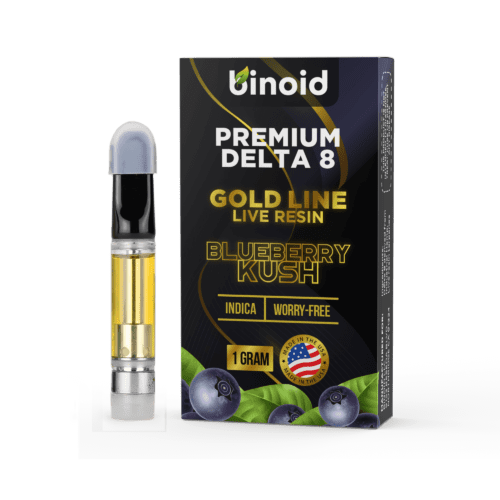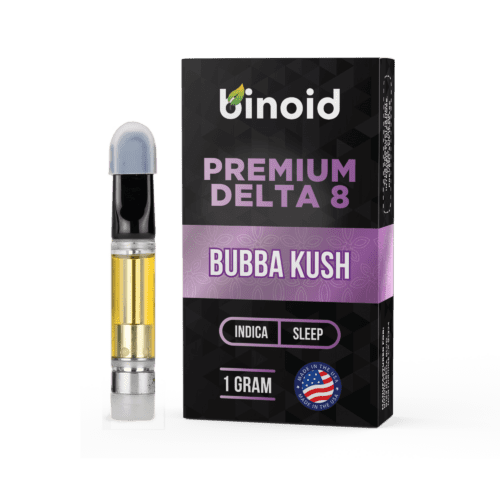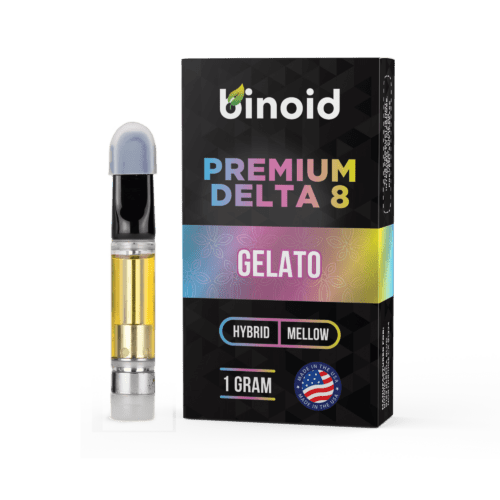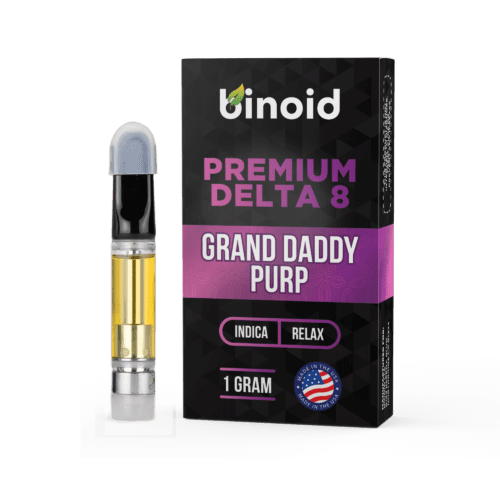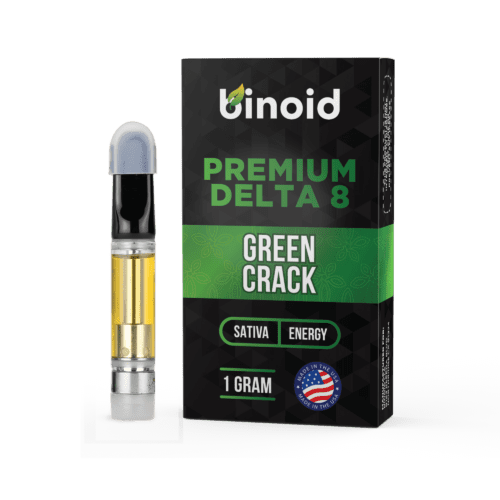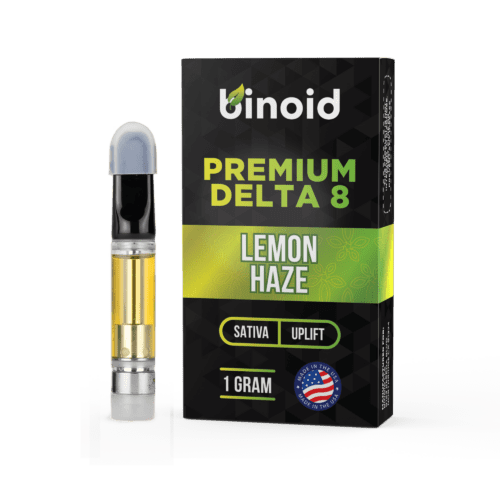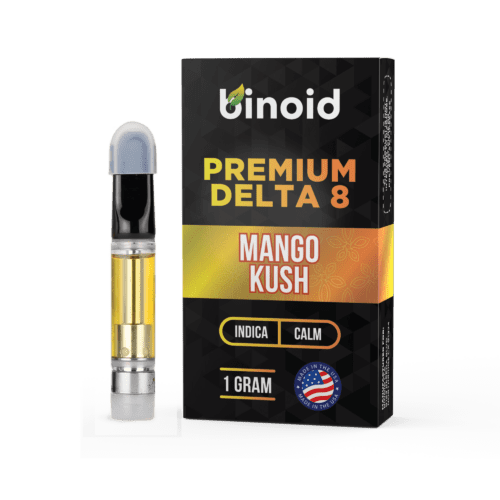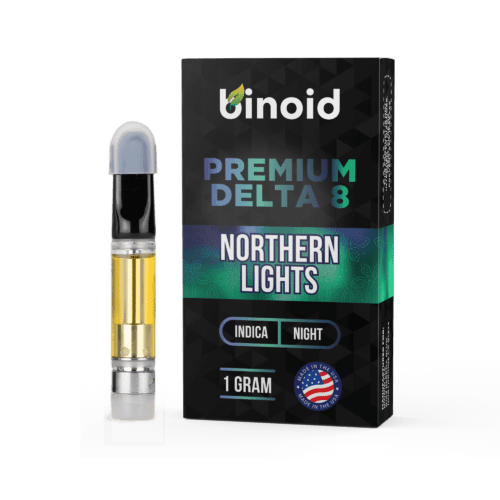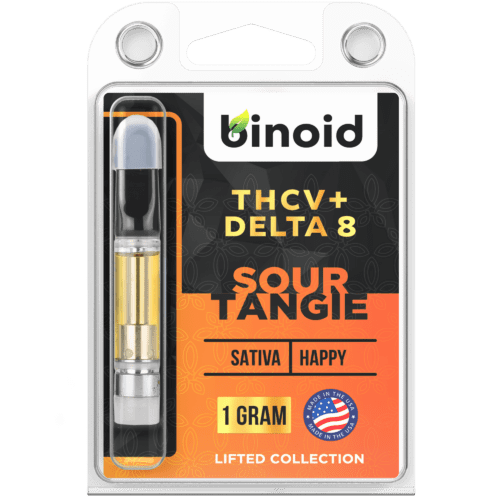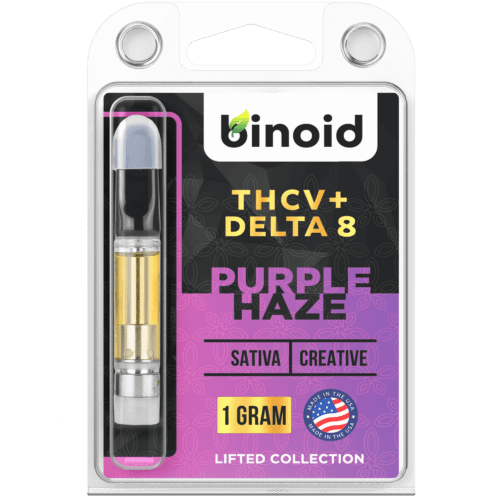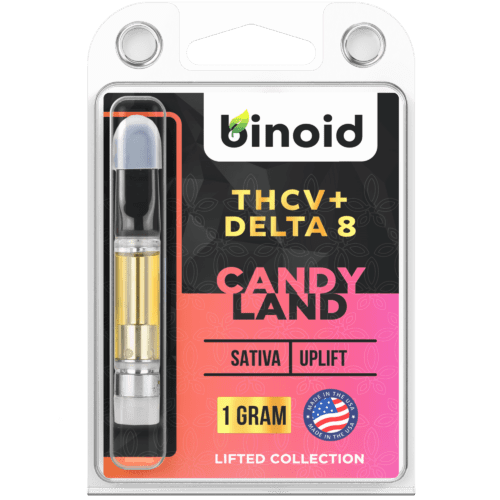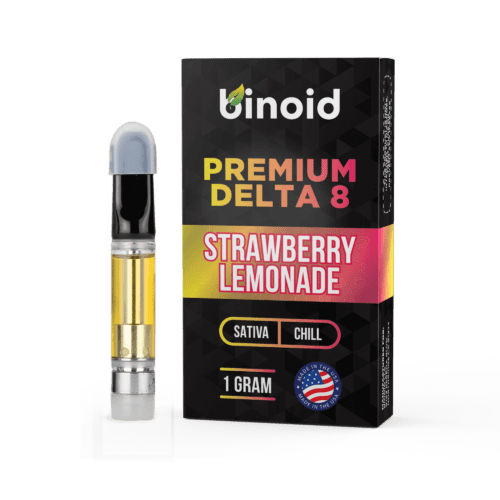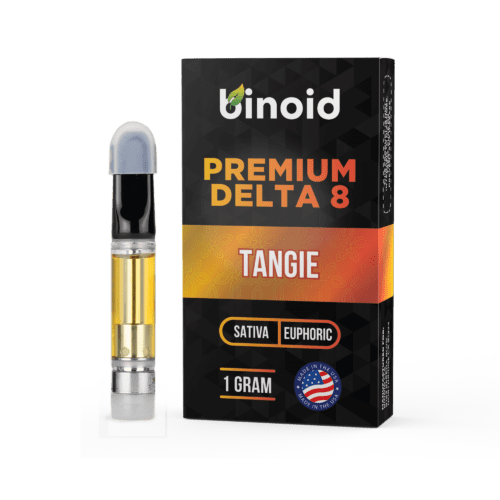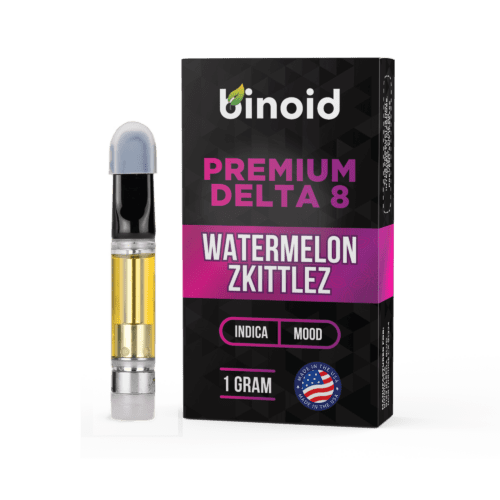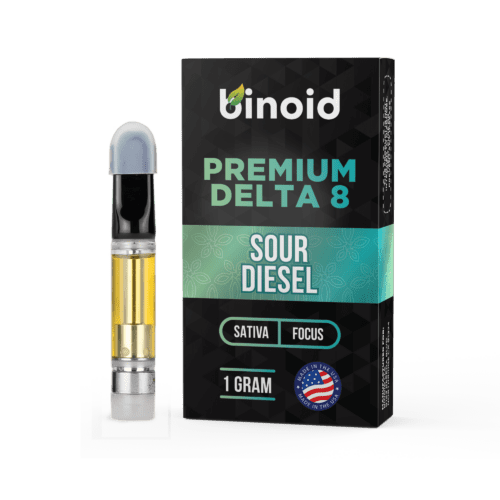In the ever-expanding universe of hemp-derived compounds, consumers are embarking on a sophisticated journey far beyond the initial frontiers of the market. The landscape has matured, revealing a breathtaking array of cannabinoids, each possessing a unique molecular key capable of unlocking a different experiential door.
This new era is defined by nuance, personalization, and a quest for effects that are precisely tailored to a specific mood, activity, or time of day. Leading this charge are vape cartridges, the sleek, technological conduits that deliver these curated experiences with unmatched efficiency and control. Within this dynamic arena, a particularly fascinating duel is capturing the attention of enthusiasts, pitting two compounds with remarkably different characters against one another in a compelling cannabinoid vape cartridges matchup: the serene and steady Delta 8 vape cartridges vs. the energetic and elusive THCV vape cartridges.
To Buy Cannabinoid Vape Cartridges Click Here
Recommended products
What are Cannabinoids?
To truly appreciate the profound differences in the Delta 8 and THCV matchup, one must first possess a firm understanding of the fundamental building blocks of their composition: cannabinoids. In the broadest scientific sense, cannabinoids represent a diverse class of chemical compounds that are defined by their ability to interact with and influence the body’s endocannabinoid system (ECS). These compounds are the primary active ingredients responsible for the effects associated with the cannabis plant, but their origins are not confined to botanical sources alone.
The scientific community generally categorizes these molecules into three distinct groups: phytocannabinoids, which are synthesized by plants (most famously, the Cannabis sativa plant); endocannabinoids, which are produced naturally within the bodies of humans and other vertebrate animals; and synthetic cannabinoids, which are created artificially in a laboratory setting. Phytocannabinoids, like the Delta 8 and THCV we are exploring today, have a molecular structure that allows them to interface with our bodies’ internal systems, orchestrating a complex symphony of physiological responses.
The discovery and subsequent understanding of this intricate relationship are rooted in the endocannabinoid system – a crucial and sophisticated cell-signaling network. The ECS plays a vital role in regulating a vast array of functions to maintain a state of internal physiological balance, a concept known as homeostasis.
This system is composed of three core components: endocannabinoids (such as anandamide, often called the “bliss molecule,” and 2-arachidonoylglycerol, or 2-AG), which are the body’s own naturally produced cannabinoid molecules; receptors that these compounds bind to (primarily CB1 receptors, found mostly in the brain and central nervous system, and CB2 receptors, located predominantly in the peripheral nervous system and immune cells); and enzymes that metabolize and break down the endocannabinoids once they have served their signaling purpose.
Phytocannabinoids are able to produce their effects because their molecular shapes allow them to mimic or otherwise influence our natural endocannabinoids, binding to these same receptors and thus modulating cellular activity.
Within the vast family of over one hundred identified phytocannabinoids, there is a clear and important distinction between major and minor compounds. Major cannabinoids, such as cannabidiol (CBD) and the well-known Delta 9 THC, are the most abundant and have been the subject of extensive scientific research and public discussion for many decades. They are present in significant quantities in the raw plant material, which makes their extraction and isolation a relatively straightforward and economically viable process.
In stark contrast, minor cannabinoids exist in much smaller, often trace, amounts, sometimes constituting less than 1% of the plant’s total cannabinoid content. Delta 8 THC and THCV both fall squarely into this category. Their natural scarcity means they cannot be efficiently or affordably extracted directly from the majority of hemp strains in large volumes, necessitating more advanced methods of production to bring them to the consumer market.
This fundamental distinction between major and minor cannabinoids is absolutely essential to understanding the landscape of the modern hemp industry. The 2018 Farm Bill, a landmark piece of federal legislation, federally legalized hemp and all hemp-derived products, provided they contain no more than 0.3% Delta 9 THC by dry weight. This legal framework, while sharply focused on restricting Delta 9 THC, inadvertently created a massive opportunity for the scientific exploration and commercialization of other cannabinoids that could be legally sourced from compliant hemp.
This legal pathway, combined with significant advancements in agricultural breeding, chemical conversion, and purification techniques, has directly enabled the rise of products centered around compounds like Delta 8 and THCV. Consequently, consumers now have access to a much broader and more sophisticated palette of experiences, empowering them to move beyond traditional options and into a refined world where they can select specific cannabinoids to better align with their unique desired outcomes.
Recommended products
What are Cannabinoid-Infused Vape Cartridges and How are They Typically Created?
Cannabinoid-infused vape cartridges, often simply called “vape carts,” are small, pre-filled containers that hold a liquid formulation of purified cannabinoid distillate and, typically, aromatic terpenes. These self-contained units are meticulously engineered to attach to a compatible battery, commonly known as a vape pen or 510-thread battery, which provides the necessary electrical power to heat the liquid and instantaneously transform it into an inhalable vapor. The primary function of a vape cartridge is to offer a convenient, discreet, and highly efficient method for consuming cannabinoids.
Unlike other consumption methods that require more preparation or have a significantly delayed onset, such as edibles, vaping allows for the rapid delivery of the active compounds directly into the bloodstream through the vast surface area of the lungs. This results in effects that can be felt almost immediately, often within a matter of minutes, providing users with unparalleled control over their experience as they can take small draws and precisely gauge the effects before deciding to continue.
The marketplace for cannabinoid vape cartridges is incredibly diverse, with products available in a multitude of shapes, sizes, and materials designed to suit various consumer preferences and accommodate ongoing technological advancements. The most ubiquitous size is the 1-gram (or 1mL) cartridge, which offers a substantial amount of oil that serves as a happy medium for both regular and occasional users. However, smaller half-gram options remain popular for those wishing to sample a new strain, while larger 2-gram, 3-gram, and even 5-gram disposable vape pens have emerged for users seeking maximum convenience and longevity.
In terms of shape, the classic cylindrical design with a 510-thread connection remains the undisputed industry standard due to its near-universal compatibility with the vast majority of batteries. Yet, some brands have pioneered proprietary pod-style systems that often feature a sleeker, more modern aesthetic and a magnetic connection, although they require a specific, brand-locked device to function. The materials used in cartridge construction are also a key differentiator, profoundly impacting performance, safety, and the purity of the user experience, with a clear hierarchy from basic plastics to premium glass and ceramic constructions.
While external designs may vary, the core components of a standard vape cartridge are universal and work in precise concert to deliver a smooth, flavorful, and consistent experience. Each part plays a critical, non-negotiable role in the device’s function, from the point of contact with the user to the electrical connection with the power source. A detailed breakdown reveals the intricate design that ensures safety and proper function:
Recommended products
-
Mouthpiece: This is the uppermost part of the cartridge through which the user inhales the vapor. Mouthpieces are crafted from a variety of materials, including common options like plastic, more premium choices like heat-resistant ceramic, and stylish alternatives like metal or wood. The shape can also differ—flat, rounded, or ergonomically contoured (“duckbill”)—to enhance comfort. The material choice is not merely aesthetic; ceramic mouthpieces, for instance, are excellent at dissipating heat, ensuring a cooler and more comfortable draw.
-
Tank/Reservoir (Chamber): The tank is the main body of the cartridge that holds the precious cannabinoid-infused oil. It must be transparent to allow the user to monitor the remaining liquid. While some budget cartridges may use polycarbonate plastic, high-quality tanks are almost exclusively made from borosilicate glass. This type of glass is highly durable and, most importantly, non-reactive, ensuring that there is no chemical leaching into the oil, which could alter the flavor and compromise the purity of the terpenes and cannabinoids.
-
Atomizer/Heating Element: The atomizer is the functional heart of the cartridge, responsible for heating the oil to its precise vaporization point (typically between 300-400°F). It consists of a heating coil wrapped around or embedded within a wicking material that draws in the oil. In modern, high-end cartridges, the atomizer core is made of a porous ceramic. This technology, often referred to by brand names like CCELL, provides exceptionally even heat distribution and a larger surface area, which prevents direct contact between the hot coil and the oil. This indirect heating is crucial for preventing burning, which would create a harsh taste and potentially harmful byproducts, and for preserving the delicate and complex flavor profile of the terpenes.
-
Base/Connector: The base is the bottom part of the cartridge that houses the atomizer and features the threading used to connect the device to a battery. The most common type is the 510-thread (referring to the 10 threads at 0.5 mm per thread), which has become the universal standard, ensuring interoperability between most cartridges and batteries on the market. The base also contains the airflow intakes—small holes that allow air to enter and mix with the vapor—and the electrical connection point that draws power from the battery to activate the heating element when the user inhales or presses a button.
The production of a cannabinoid-infused vape cartridge is a meticulous, multi-stage process that merges precision manufacturing with sophisticated chemical science to ensure a safe, effective, and enjoyable final product. This complex journey can be broken down into three distinct parts: the fabrication of the physical hardware, the formulation of the specialized oil, and the final assembly and rigorous quality control.
Recommended products
Part 1: How the Cartridge Itself is Made and Constructed
The manufacturing of the empty cartridge begins with the high-precision fabrication of its individual components in specialized facilities. The borosilicate glass for the tank is molded and cut to exact specifications. The ceramic for the atomizer core is created from refined mineral powders, which are then fired at extremely high temperatures and shaped, after which the metallic heating coil is carefully integrated. The mouthpiece and base are also manufactured, often through injection molding for plastics or CNC (Computer Numerical Control) machining for metals.
These separate parts are then assembled in a sterile, dust-free clean-room environment (often adhering to ISO standards) to prevent any contamination. Throughout this process, stringent quality control is paramount, with manufacturers conducting tests for air-tightness to prevent leaks, ensuring proper airflow resistance for a good draw, and verifying that the electrical connections are sound and the 510-threading is perfectly machined.
Part 2: How the Cannabinoid-Infused Vape Oil is Made
This highly scientific stage starts with legally compliant, high-quality hemp biomass. The cannabinoids are first extracted from the plant material using methods like supercritical CO2 extraction (which uses pressurized carbon dioxide as a solvent) or cryogenic ethanol extraction to create a crude oil. This crude oil then undergoes extensive refinement through processes like winterization (to remove fats, lipids, and waxes) and multi-stage distillation to create a highly potent and pure cannabinoid distillate, which serves as the golden, viscous base for the vape liquid.
For minor cannabinoids that are not abundant enough for direct extraction, an additional step like isomerization (for Delta 8) or other complex conversions may be required to create the target molecule from a more abundant precursor like CBD or CBG. This reaction is followed by thorough purification, often using flash chromatography, to remove any residual catalysts or unwanted byproducts. Finally, this ultra-pure distillate is formulated by reintroducing carefully selected terpene profiles—either botanical, cannabis-derived, or live resin—to create the desired flavor, aroma, and strain-specific effects.
Part 3: Bringing It All Together
In the final stage, the precisely formulated cannabinoid and terpene mixture is gently heated to reduce its viscosity and is then carefully injected into the empty, assembled cartridges. This is typically done using automated filling machines in a sterile environment to ensure dosage consistency and prevent contamination. Once filled, the cartridges are securely capped or sealed to create an airtight container that prevents any leakage.
The last and arguably most critical step is comprehensive third-party lab testing. A statistically significant sample from each batch is sent to an independent, ISO-accredited laboratory. There, it is tested for potency (to confirm cannabinoid percentages), purity (to ensure it is free from residual solvents, heavy metals, pesticides, and microbial contaminants), and legal compliance (to verify the Delta 9 THC level is at or below the 0.3% threshold). Only after passing these rigorous tests is the batch approved for packaging and release to the market.
Recommended products
Breaking Down Today’s Cannabinoid Vape Cartridges Matchup: Delta 8 Vape Cartridges vs. THCV Vape Cartridges
With a comprehensive understanding of cannabinoids and the intricate manufacturing of vape cartridges, we can now delve into the main event. This particular matchup is especially intriguing because it pits two cannabinoids against each other that occupy nearly opposite ends of the experiential spectrum. This is not a contest to determine an absolute winner, but rather an exploration designed to illuminate the starkly different characteristics and ideal applications that define each compound. Delta 8 THC, the reliable agent of calm, and THCV, the energetic catalyst of focus, offer profoundly different journeys. Understanding the science and user-reported effects behind each is the key to empowering you to make a discerning choice that aligns perfectly with your goals and personal preferences.
Contender #1: Delta 8 Vape Cartridges
Delta 8 vape cartridges have firmly established themselves as a cornerstone of the modern hemp market, skyrocketing to popularity for offering a uniquely balanced and accessible experience that resonates with a broad audience. They represent a desirable middle ground that many consumers find incredibly appealing, effectively bridging the gap between the gentle, non-intoxicating properties of CBD and the more powerful, and sometimes overwhelming, intensity of Delta 9 THC. These cartridges are widely celebrated for their ability to induce a state of serene relaxation, physical ease, and clear-headed bliss, often without the pronounced mental fogginess that can accompany other cannabinoids.
This sterling reputation has made Delta 8 a go-to choice for an extensive range of users, from curious individuals just beginning their cannabinoid journey to seasoned enthusiasts seeking a more functional and manageable option for unwinding after a long day, enhancing a low-key social gathering, or simply finding a moment of calm in a hectic world.
At its core, Delta 8 THC (Delta-8-Tetrahydrocannabinol) is a fascinating cannabinoid that exists as a close chemical cousin to the more widely known Delta 9 THC. While it does occur naturally in the cannabis plant, it is classified as a minor cannabinoid because it is found in exceptionally small concentrations, often as a result of Delta 9 THC degrading over time due to oxidation. Its defining structural feature, which dictates its entire character, is a double bond located on the eighth carbon atom of its molecular chain.
This placement distinguishes it from Delta 9, where the bond is on the ninth carbon, and this subtle difference in molecular architecture is scientifically believed to be the primary reason for its unique interaction with the body. Using the analogy of a key and a lock, the body’s CB1 receptors act as the lock; while the Delta 9 “key” fits almost perfectly, the slightly altered shape of the Delta 8 “key” results in a lower binding affinity. This less perfect fit is thought to cause a noticeably milder and more body-focused psychoactive experience, prized for its clarity.
Because its natural scarcity makes direct extraction commercially unviable, the vast majority of Delta 8 is produced through a laboratory process called isomerization, where skilled chemists use a catalyst and controlled conditions to skillfully convert abundant, hemp-derived CBD into a pure, high-quality Delta 8 distillate, which must then be rigorously purified to ensure its safety and potency.
Recommended products
Now, the sheer variety of Delta 8 vape cartridges available on the market today is a powerful testament to the industry’s relentless innovation, offering a meticulously tailored experience for nearly every user. While the core active ingredient is always Delta 8 THC, the final product can be customized in a multitude of ways, with each variation below affecting the overall character, flavor, and performance of the vape:
-
Shapes & Sizes: Delta 8 cartridges overwhelmingly adhere to the industry standards, most commonly found in 1-gram cylindrical formats with the universal 510-threading. However, as brands seek to differentiate themselves and cater to specific user habits, consumers can also find smaller half-gram options for lighter use, larger 2-gram or even 3-gram disposables for ultimate convenience and extended enjoyment, and sleek, proprietary pod systems that pair with brand-specific batteries, often offering unique features or form factors.
-
How They’re Constructed: Premium Delta 8 cartridges are invariably built with high-quality, inert materials to ensure optimal performance, safety, and flavor preservation. This includes a non-reactive borosilicate glass tank to hold the viscous oil and an advanced ceramic core atomizer (such as CCELL technology) that provides consistent, low-temperature heating. This superior construction is critical for preventing the oil from burning, which can create a harsh, acrid taste, and ensures that the full spectrum of delicate terpenes is vaporized efficiently for a smooth, pure, and flavorful draw every time.
-
Potential Use of Live Resin or Live Rosin: To elevate the experience far beyond that of standard distillate, many top-tier Delta 8 cartridges incorporate live resin or live rosin. Live resin is a cannabis concentrate produced from fresh, flash-frozen cannabis plants, a process that preserves a much wider and more volatile range of terpenes and other aromatic compounds compared to traditional methods that use dried and cured material. Live rosin is a highly prized solventless extract created using only heat and pressure. The addition of these full-spectrum extracts to Delta 8 distillate results in a profoundly more robust, authentic flavor and a more nuanced, well-rounded experience often referred to as the “entourage effect.”
-
Strain-Infused: The perceived effects of a Delta 8 cartridge are heavily influenced by its specific terpene profile, which is carefully formulated to mimic well-known cannabis strains. Sativa-dominant strains are infused with terpenes like limonene and pinene, known for their uplifting and citrusy aromas, making them ideal for daytime use. Indica-dominant strains feature terpenes like myrcene and linalool, associated with relaxation and calming, earthy aromas, perfect for evening or unwinding. Hybrid strains offer a balanced blend of both, providing a versatile experience that can be suitable for nearly any time of day.
-
Sometimes Combined with Other Cannabinoids: The true artistry of modern cannabinoid formulation lies in the creation of unique, synergistic blends. Delta 8 serves as an excellent and stable base that can be masterfully combined with other cannabinoids to create highly specific and targeted effects:
-
Non-Intoxicating: Blending Delta 8 with CBD can temper the psychoactive effects for a more grounded and exceptionally balanced experience. The addition of CBN, a cannabinoid often associated with restful and sedative states, is extremely popular for evening formulas. Meanwhile, CBG is often included for its perceived focusing and clarifying properties, creating a unique “calm-alert” sensation.
-
Mild Potency: To create a more complex yet still gentle experience, formulators may combine Delta 8 with cannabinoids like Delta 10 for a hybrid “body and mind” effect, or with THCV, THCM, or Delta 6 to add unique cerebral nuances and layers to the experience without significantly increasing the intensity.
-
Moderate Potency: For users who desire a more pronounced euphoric lift, formulators may add Delta 11, a cannabinoid known for its potent effects, or THCA, which is the acidic precursor to Delta 9 THC and converts into it upon heating, effectively increasing the overall potency of the cartridge.
-
Strong Potency: For experienced users seeking the maximum possible effect, Delta 8 is often expertly blended with highly potent minor cannabinoids like THC-P, or THC-JD. These compounds are known for their exceptionally strong binding affinity to cannabinoid receptors and can dramatically amplify the overall potency, duration, and character of the experience, turning a gentle ride into a powerful journey.
-
The overall effects of a Delta 8 vape cartridges are characterized by a sense of calm, physical relaxation, and a gentle cerebral uplift that many users find both enjoyable and highly functional. It’s often described as a manageable ‘high’, thus allowing hemp vapers to remain clear-headed and engaged in activities like creative work or socializing. However, this baseline experience becomes much more textured when combined with other formulation factors. A strain-infused Sativa disposable can feel energizing and giggly, while an Indica blend can produce a profoundly relaxing sensation ideal for winding down.
The inclusion of live resin elevates this further by providing a richer taste and a more full-bodied feeling. Delta 8 is also frequently blended with other cannabinoids to create unique effects; combining it with non-intoxicating cannabinoids can add a layer of focused calm, while blending it with more potent ones significantly increases the overall intensity, creating a powerful experience built on Delta 8’s gentle foundation.
Recommended products
Pros & Cons
Like any product, Delta 8 vape cartridges come with their own distinct set of advantages and potential drawbacks. A thorough understanding of these can help you determine if they are the right fit for your personal needs, tolerance, and expectations.
Pros:
-
Milder, More Manageable Experience: Its lower psychotropic potency compared to its more famous cousin, Delta 9 THC, makes it an excellent and often recommended entry point for beginners. This reduced intensity lowers the barrier for canna-curious individuals and provides a more functional option for daytime or social use where heavy impairment is undesirable. The experience is often described as being more about gentle euphoria and less about overwhelming cognitive shifts.
-
Promotes a Sense of Calm and Relaxation: Users frequently and consistently report a significant feeling of physical ease and mental tranquility, describing it as a “warm blanket” effect ideal for unwinding. This relaxation is often felt more in the body than in the head, easing tension without necessarily leading to the heavy sedation or “couch-lock” associated with some potent Indica strains. This makes it highly functional for taking the edge off while still remaining engaged.
-
Clear-Headed Characteristics: Many users greatly appreciate the ability to remain focused, lucid, and coherent while still enjoying the euphoric effects. This stands in contrast to the “mental fog” or short-term memory impairment that can sometimes accompany stronger cannabinoids. This unique clarity is precisely why it has become so popular for creative pursuits like writing or painting, as well as for immersive activities like gaming or watching a film.
-
Wide Product Variety: The mature market for Delta 8 is saturated with a seemingly endless array of options, allowing for a highly personalized experience. This variety extends beyond just strains (Indica, Sativa, Hybrid) to include complex cannabinoid blends, different extract types (pure distillate vs. full-spectrum live resin), and various hardware qualities to suit any budget or preference.
-
Federal Legality Under the 2018 Farm Bill: Again, as a hemp-derived product containing less than 0.3% Delta 9 THC, it is federally legal in the United States, which significantly increases its accessibility. This legality, stemming from the Farm Bill’s specific focus on Delta 9 THC, means that Delta 8 products can often be purchased online and shipped directly to consumers in many states, offering a level of convenience not available for state-legal marijuana products.
-
Rapid Onset of Effects: The vaping consumption method is highly efficient, allowing for effects to be felt within minutes of inhalation. This is because cannabinoids are absorbed directly into the bloodstream via the lungs, bypassing the slower metabolic route through the digestive system. This immediate feedback allows users to carefully titrate their dose, taking a single puff and waiting to accurately gauge the effects before deciding to consume more.
-
Versatility in Blends: It serves as a fantastic and stable base cannabinoid that can be expertly combined with a whole host of other minor and major cannabinoids. Its moderate potency and pleasant, calming effects provide a solid foundation upon which other compounds can be layered to create highly targeted experiences. Formulators use it as a canvas, adding potent cannabinoids like THC-P for intensity or non-intoxicating ones like CBD for balance.
-
Less Overwhelming for Sensitive Users: Individuals who are prone to feeling anxious, paranoid, or simply overwhelmed with Delta 9 THC often find Delta 8 to be a much more comfortable and forgiving alternative. The lower affinity for the CB1 receptor appears to reduce the likelihood of inducing these undesirable side effects. This offers a more predictable and reliably pleasant journey for those who are sensitive to THC’s potent psychoactivity.
Recommended products
Cons:
-
Potential for Overconsumption: Because the effects are noticeably milder, newcomers in particular may be tempted to consume too much, too quickly, in pursuit of a stronger feeling. The initial gentle onset can be deceptive, and a novice might take several additional puffs before the full effects of the first one have peaked. This “stacking” of doses can still lead to uncomfortable side effects.
-
Legal Ambiguity at the State Level: Despite being federally legal under the Farm Bill, several states have specifically banned or severely restricted the sale and possession of Delta 8 THC. Lawmakers in these states have moved to close what they perceive as a loophole, often classifying Delta 8 as a controlled substance equivalent to Delta 9. This creates a confusing and ever-changing legal patchwork, making it the consumer’s responsibility to verify the current laws in their specific location.
-
Production Methods Require Scrutiny: Since it is created via a chemical conversion process, the quality and purity of the final product are highly dependent on the manufacturer’s expertise and ethics. Improper isomerization can leave behind residual acids, solvents, or unknown byproducts. This makes it absolutely essential to only purchase from reputable brands that provide comprehensive, full-panel lab tests from accredited third-party labs for every batch.
-
May Not Satisfy High-Tolerance Users: Individuals with a high tolerance for traditional THC, developed through regular and heavy use, may find the effects of a pure Delta 8 product to be too subtle. Over time, the body’s cannabinoid receptors become less sensitive, requiring a stronger binding affinity to produce a noticeable effect. For these seasoned users, Delta 8’s lower potency may feel underwhelming unless it is part of a blend fortified with more powerful cannabinoids.
Recommended products
Contender #2: THCV Vape Cartridges
Entering the matchup as a truly unique and fascinating contender, THCV vape cartridges have rapidly gained a dedicated following among cannabinoid connoisseurs seeking an experience that defies conventional expectations. Unlike the THC variants that primarily modulate the intensity of a familiar effect, THCV introduces a completely different set of characteristics. It is most widely celebrated for its stimulating, clear-headed, and energizing properties, often drawing comparisons to a strong cup of coffee rather than to its cannabinoid relatives.
This reputation as a “get things done” cannabinoid has made it highly sought-after for daytime use, workouts, and any situation that demands sharp focus and mental acuity. THCV cartridges appeal to users who want to harness the power of a rare cannabinoid to boost productivity and elevate their state of being without the relaxation or sedation typical of other compounds.
The scientific exploration of Tetrahydrocannabivarin (THCV) now spans over half a century, yet much of its journey has occurred outside the spotlight. Its formal discovery was documented in a 1971 Nature paper by F. W. H. Merkus, who identified it alongside CBDV. This discovery kicked off a period of foundational research throughout the 1970s, where the primary focus was on basic pharmacology and classification. Scientists classified THCV as a “propyl homolog” of THC, a key distinction meaning its molecular structure possesses a 3-carbon side chain, unlike the 5-carbon side chain of the more famous Delta 9 THC.
This seemingly minor structural difference is responsible for its profoundly different effects. This structural variance is also the source of THCV’s most unique property: a biphasic, or dose-dependent, effect. In low doses, it is reported to act as a CB1 antagonist; it occupies the receptor without activating it, much like a key that fits in a lock but doesn’t turn. This allows it to block or mute the effects of other cannabinoids like Delta 9 THC and is why it is generally considered non-psychoactive at this level.
For decades following these initial studies, however, dedicated research into THCV was sparse. This lull was largely due to the overarching legal restrictions and political stigma surrounding cannabis, which severely limited funding, access to research-grade material, and the ability of scientists to investigate any cannabinoid in depth.
This dynamic has shifted dramatically over the last decade. As legal barriers have lowered and scientific technology has advanced, interest in minor cannabinoids has surged, and THCV has become a primary candidate for its unique therapeutic potential. Modern research has moved far beyond simple classification, now intensely investigating its benefits for specific health conditions. In the metabolic sphere, studies have focused on its ability to suppress appetite and regulate blood sugar levels, making it a promising area of research for obesity and type 2 diabetes.
Neurologically, its neuroprotective properties are being explored for conditions like Parkinson’s disease, and its potential to reduce seizures has made it a compound of interest in epilepsy research. This recent intensification marks a new chapter for THCV, moving it from a little-known homolog of THC to a cannabinoid with distinct and compelling possibilities.
Also, as the dosage of THCV increases, it crosses a threshold and becomes a CB1 agonist, beginning to activate the receptor and produce a psychoactive effect of its own. This effect is distinctly different from that of THC, often described by users as a clear-headed, stimulating, and motivating euphoric buzz that is remarkably free of mental fog. Another key functional difference is its duration, which is significantly shorter than that of Delta 8 or Delta 9 THC, making it a preferred choice for a temporary boost.
While THCV is a minor cannabinoid, it is found in naturally higher concentrations in specific African landrace Sativa strains like Durban Poison. Still, these amounts are often insufficient for consistent, large-scale commercial production. Therefore, to ensure a pure and reliable supply, THCV is often synthesized in a lab from its direct precursor, cannabigerovarinic acid (CBGVA), which is the “mother” cannabinoid for all “varin” series compounds like THCV and CBDV.
Now, the market for THCV vape cartridges, while newer and more niche than that for Delta 8, is rapidly expanding as brands innovate to showcase this unique compound’s remarkable properties. Formulators are developing a growing range of products designed to deliver THCV’s signature stimulating effects, either in its pure form or as the star player in meticulously crafted blends. These variations allow discerning consumers to select a product that perfectly aligns with their goals, whether they are seeking pure, unadulterated focus or a more layered, synergistic experience:
Recommended products
-
Shapes & Sizes: THCV cartridges are most commonly available in the industry-standard 1-gram and half-gram 510-thread formats, ensuring wide compatibility with existing batteries. Given its use case for focus and daytime activity, it is also becoming increasingly popular in sleek, all-in-one disposable vapes that are perfect for on-the-go consumption and precise, discreet dosing.
-
How They’re Constructed: Given the premium and often higher cost of THCV distillate, reputable brands exclusively use high-quality hardware for these cartridges. This means you will typically find them constructed with non-reactive borosilicate glass tanks and advanced ceramic atomizers. This premium construction is vital to preserve the pure, often subtly earthy flavor of the THCV oil and to ensure efficient vaporization without any risk of burning or hardware-induced contamination.
-
Potential Use of Live Resin or Live Rosin: While less common than with THC-centric products due to THCV’s different sourcing, some highly specialized cartridges may blend pure THCV distillate with live resin or rosin from a cannabis strain. This is done to introduce a full spectrum of natural terpenes, which can help to round out the experience and provide a more authentic flavor profile through the entourage effect, modulating the stark clarity of the pure THCV.
-
Strain-Infused: To further tailor the experience, THCV distillates are almost always blended with specific terpene profiles. Overwhelmingly, these are Sativa and Sativa-dominant hybrid profiles, chosen to complement and amplify THCV’s naturally energizing and focus-enhancing effects. Terpenes like limonene, pinene, and terpinolene are often used to add uplifting citrus and pine notes to the experience.
-
Sometimes Combined with Other Cannabinoids: THCV‘s unique properties make it an exceptional component for creating powerful and highly targeted synergistic blends. Formulators use it as a catalyst to add energy and focus to a formula:
-
Non-Intoxicating: When combined with CBD or CBG, the blend can offer a powerful, non-psychoactive sense of focus and clarity. The THCV provides the stimulating spark, while the CBD or CBG provides a grounded, stable feeling, creating an ideal blend for work or study.
-
Mild Potency: Blending THCV with a cannabinoid like Delta 10 or THCM can create an intensely energetic and motivating Sativa experience. This combination is popular among users looking for a significant boost in drive and creativity without a heavy psychoactive feeling.
-
Moderate Potency: THCV is very frequently combined with Delta 8 to create a “best of both worlds” balanced effect. The Delta 8 provides a gentle, relaxing body sensation and mild euphoria, while the THCV adds a layer of sharp mental focus and energy, preventing any potential sedation.
-
Strong Potency: For an extremely potent and intensely euphoric yet clear-headed experience, formulators may blend THCV with powerful compounds like THC-P or. These blends are designed for experienced users seeking a powerful rush of uplifting energy.
-
The overall effects of a THCV vape cartridge are centered around a uniquely stimulating, clear-headed, and functional experience that is quite distinct from other psychoactive cannabinoids. Users often report a surge of clean energy, heightened focus, and a notable lack of the munchies, which makes it an ideal companion for daytime productivity. Its functional aspects are geared towards engagement and alertness, often described as providing a motivating “buzz” that can help power through tasks without the mental fog or physical heaviness of THC.
This core experience is then sculpted by its formulation. A Sativa-strain infusion will amplify the energetic qualities to their peak, while blending it with live resin can add a more complex, full-bodied character to the stark clarity. The addition of other cannabinoids creates a spectrum of possibilities; from a perfectly balanced “mind and body” experience to a soaring, intensely euphoric flight, all depending on the other cannabinoid its paired with.
Recommended products
Pros & Cons
THCV vape cartridges offer a highly specialized set of benefits and considerations that make them stand out in the crowded cannabinoid market. Evaluating these pros and cons is essential to determine if its unique, stimulating profile is the right choice for your needs.
Pros:
-
Unique Stimulating Effects: Its primary appeal is its clean, energizing effect, which many users find enhances productivity and motivation. Unlike the jittery, anxious energy that can accompany caffeine, THCV is often reported to provide a smoother, more focused sense of alertness and drive. This type of stimulation is often described as a clear wave of mental and physical motivation, making it exceptional. The feeling is one of purposeful energy rather than unfocused restlessness.
-
Promotes a Clear-Headed Experience: Even in psychoactive doses, THCV is known for its remarkable clarity. Users often report feeling sharp, focused, and mentally agile, without the cognitive haze, confusion, or short-term memory effects sometimes associated with traditional THC. This unique characteristic allows for an elevated state of mind without sacrificing mental acuity, making it suitable for tasks or social situations where being articulate and present is important. You can explore a psychoactive state while retaining the ability to engage in complex thoughts and conversations.
-
Shorter Duration of Effects: The effects of THCV are noticeably shorter-lived than those of Delta 8 or Delta 9 THC, typically lasting for only a fraction of the time, often under two hours. This is a significant advantage for users who want a temporary boost for a specific task without being committed to a long-lasting experience that could impact their entire day. This feature allows for precise “experiential scheduling,” enabling a user to fit a session into a specific time block with a clear beginning, middle, and end, before returning to a baseline state.
-
Associated with Appetite Suppression: One of THCV‘s most famous characteristics is its reported ack of appetite stimulation, a major point of differentiation from THC’s well-known “munchies”. Many users find it actually suppresses the desire to snack or overeat, which makes the overall experience feel “cleaner” and more aligned with goals of productivity and focus. For consumers who actively dislike the intense and often distracting hunger that other cannabinoids can induce, this quality is a significant benefit.
-
Excellent for Focus and Productivity: The potent combination of clean energy, mental clarity, and motivation makes THCV a powerful tool for tasks that require deep concentration. It is highly favored by students, artists, and professionals for tackling complex projects, overcoming procrastination, or powering through monotonous work. Users often report that THCV helps them achieve a “flow state” more easily, where they become fully immersed and engaged in an activity with diminished distraction.
-
Biphasic Effects Offer Versatility: The dose-dependent nature of THCV adds a fascinating layer of versatility and sophistication to its use. In very low, sub-psychoactive doses, product formulators can use it in blends to potentially modulate or buffer the more intense effects of other cannabinoids. At higher, more common doses, it unlocks its full, unique psychoactive properties, making it a powerful standalone compound. This two-in-one nature makes it a highly dynamic tool for creating a wide range of targeted effects.
-
Novelty and Unique Profile: For the experienced cannabinoid user, the landscape can sometimes feel like minor variations on a single theme of effects. THCV shatters this mold by offering a genuinely different class of experience that stands entirely on its own. Its stimulating, clear-headed buzz is so distinct from the rest of the THC family that it provides a novel and refreshing journey, rekindling a sense of discovery for even the most seasoned connoisseur who thinks they’ve tried it all.
-
Synergizes Well in Blends: THCV is a formulator’s dream for creating targeted Sativa and Hybrid blends that deliver specific, functional outcomes. It can be expertly combined with Delta 8, for instance, where the THCV acts as a “gas pedal” for energy while the Delta 8 provides the “power steering” for a smooth, calm body feel. When paired with Delta 10, it doubles down on the Sativa-like properties, creating an intensely energetic and motivating experience for users who want maximum uplift.
Cons:
-
Can Be Over-Stimulating: For individuals who are sensitive to stimulants or prone to feelings of anxiousness, the powerful energizing effects of THCV can be too intense and uncomfortable. The distinct cerebral rush, while euphoric for many, could manifest as racing thoughts, a physically unsettling restlessness, or a feeling of being uncomfortably on edge. This compound demands respect, and it is always strongly advised for new users to begin with the smallest possible dose to gauge their individual reaction before attempting more.
-
Psychoactive in Higher Doses: While its non-psychoactive potential at low doses is often discussed, users seeking to avoid any “high” altogether must be extremely cautious with vape cartridges. The amounts needed to achieve the signature energizing effects from vaping are almost always high enough to be distinctly psychoactive. It is crucial for consumers to understand this and manage their expectations; if you’re vaping THCV for its primary benefits, you should be prepared for a noticeable shift in perception and a tangible psychoactive experience.
-
Effects Can Be Unpredictable and Fleeting: The unique properties of THCV can lead to a confusing or shorter-than-expected experience, especially for new users. Its biphasic nature means a small dose might produce little to no noticeable effect, while a slightly larger dose can unexpectedly cross the threshold into a full psychoactive experience. Furthermore, while its short duration is a benefit for productivity, it can be a drawback for recreational users seeking a longer, more sustained session, potentially requiring frequent re-dosing which can be both inconvenient and less economical.
-
Higher Cost and Limited Availability: Because THCV is rarer in most hemp strains and its chemical synthesis or isolation can be a more complex and costly process, the raw distillate is more expensive to produce. This higher production cost is inevitably passed on to the consumer, making THCV products noticeably pricier than more common cannabinoids. Furthermore, its niche status means that fewer brands have invested in producing it, which limits consumer choice and overall availability in the market
Recommended products
Other Key Things You Should Know About When Choosing Either Delta 8 Vape Cartridges or THCV Vape Cartridges
Choosing between Delta 8 and THCV vape cartridges involves a decision that extends far beyond simply picking between relaxing and energizing effects. A responsible, safe, and satisfying experience hinges on a holistic understanding of the product, from its agricultural origins as a humble hemp seed to the sophisticated hardware that delivers its vapor. The current hemp-derived cannabinoid market, while innovative and exciting, operates in a space with minimal federal oversight, which places the burden of due diligence squarely on the consumer.
So, to navigate this complex landscape safely and effectively, it is absolutely essential to look beyond the flashy marketing claims and scrutinize the factors that truly define a product’s quality, safety, and suitability for your specific needs. The following points provide a comprehensive checklist of critical considerations that every consumer should be aware of before making any purchase:
-
Source of Hemp: The absolute foundation of any high-quality cannabinoid product is the hemp from which it is derived. The quality of this starting botanical material directly and profoundly impacts the purity and safety of the final distillate. It is imperative to choose products made from hemp grown in the United States, as domestic farmers are subject to federal and state regulations regarding cultivation practices under the Farm Bill. Look for brands that are completely transparent about their sourcing, preferably using hemp grown with organic and sustainable methods. This minimizes the risk of the plant, which is a known bioaccumulator, absorbing harmful contaminants like pesticides, heavy metals, or chemical fertilizers from the soil. These contaminants can become dangerously concentrated during the extraction and distillation processes, making their way into the final product. A reputable company will be proud of its hemp source and will readily provide detailed information about its farming partners and agricultural practices.
-
Third-Party Lab Testing (COAs): This is, without exaggeration, the single most important factor in verifying the safety, potency, and legitimacy of a vape cartridge. A Certificate of Analysis (COA) is a document from an accredited, independent third-party laboratory that details the precise composition of the product. You should never, under any circumstances, purchase a cannabinoid product from a brand that does not make these reports easily accessible for every batch, typically via a QR code on the packaging or a dedicated section on their website. A comprehensive COA, often called a “full panel” test, should include several key analyses: a potency test to confirm the percentages of Delta 8, THCV, and other cannabinoids (and to verify it contains ≤0.3% Delta 9 THC); a purity panel that screens for residual solvents leftover from the extraction process; a heavy metals test (for lead, arsenic, mercury, and cadmium); a comprehensive pesticide screening (for dozens of specific chemicals); and a test for microbial contaminants like mold, mildew, yeast, and bacteria, as well as mycotoxins. Learning to read these reports is a consumer’s most powerful tool and best defense against unsafe, ineffective, or illegal products.
-
Extraction and Conversion Methods: The complex journey from a green hemp plant to a golden vape oil involves sophisticated scientific processes that must be performed perfectly. The initial extraction of cannabinoids from the biomass is typically done using either supercritical CO2 or ethanol. CO2 extraction is often considered the gold standard as it is highly tunable and leaves behind no harmful solvents, though it requires very expensive equipment. Ethanol extraction is also safe and effective when performed correctly with high-grade, purified ethanol and proper post-extraction purging techniques to remove all residual solvent. More importantly for these minor cannabinoids, the conversion process—whether it’s isomerization of CBD to create Delta 8 or a different synthetic route to create THCV—must be performed with extreme precision by qualified chemists in a professional laboratory. Improper or incomplete reactions can leave behind unwanted byproducts or residual acids and catalysts. Trustworthy brands will utilize advanced purification techniques like flash chromatography to clean up the distillate after conversion, ensuring you receive only the pure, target cannabinoid.
-
Terpene Profiles: Terpenes are the aromatic organic compounds found in cannabis and many other plants that are responsible for the distinct flavors and smells of different strains, like the citrus aroma of an orange or the piney scent of a pine tree. In vape cartridges, they do far more than just provide taste and aroma; they also play a crucial role in shaping the overall effects through a phenomenon known as the entourage effect, where they work synergistically with cannabinoids to enhance or modulate their properties. It’s important to understand the source of these terpenes. Some brands use botanical-derived terpenes (extracted from plants other than cannabis), which are safe and can mimic strain profiles but may lack the authentic complexity of cannabis-native ones. Others use prized cannabis-derived terpenes (CDTs), which are extracted directly from cannabis or hemp plants and provide a more authentic and nuanced experience. The highest quality products will often feature live resin or live rosin, which contain a naturally preserved, unadulterated terpene profile directly from the fresh plant, offering the most robust and true-to-strain experience possible.
-
Cartridge Hardware Quality: The precious oil inside the cartridge is only half of the equation; the quality and safety of the hardware itself are equally critical for a positive and safe experience. Low-quality cartridges can pose several significant problems. They may have poor airflow, be prone to frustrating clogs and messy leaks, or use cheap wicking materials and coils that burn the oil, creating a harsh, unpleasant taste and potentially harmful byproducts like formaldehyde. The best cartridges are constructed with high-quality, inert materials like borosilicate glass tanks and advanced ceramic heating elements (e.g., CCELL technology). Ceramic provides superior heat management, ensuring the oil is vaporized at an optimal, consistent temperature. Furthermore, it’s crucial that the hardware itself has been tested for heavy metal leaching, as some low-grade metal components in the atomizer or central post can release harmful contaminants like lead into the vapor when repeatedly heated.
-
Your Personal Tolerance: Understanding your own body and your unique tolerance level is absolutely fundamental to having a positive and enjoyable experience. If you are a newcomer to psychoactive cannabinoids, the old adage “start low and go slow” is essential, non-negotiable advice. Begin with a single, small puff (a 2-3 second draw) and wait at least 15-20 minutes to fully gauge the effects before even considering another. The milder nature of Delta 8 and the unique stimulation of THCV can be deceptive, and overconsumption is still possible and can lead to uncomfortable feelings. For experienced users with a higher tolerance to THC, Delta 8 may feel subtle, while THCV might offer a more pronounced and novel effect due to its different mechanism of action. It’s also important to remember that tolerance can build over time with regular use, often requiring periodic breaks to reset your body’s sensitivity.
-
Desired Experience: One of the greatest advantages of the modern, diverse cannabinoid market is the ability to select products based on the specific experience you are actively seeking. Before making a purchase, take a moment to clearly define your goal. This matchup makes that choice particularly stark. Are you looking for something to help you relax, quiet your mind, and unwind in the evening after a long day? A Delta 8 cartridge with an Indica terpene profile would be an excellent and logical choice. Are you seeking a potent boost of creative energy and sharp focus for a daytime project? A Sativa-dominant THCV cartridge would be a much more appropriate tool for the job. Reading detailed product descriptions and honest user reviews can provide invaluable insight into the intended and actual effects of a particular blend.
-
The Importance of the Battery (Vape Pen): The cartridge is only one part of the vaping system; the battery you pair it with significantly impacts the overall performance and experience. While a simple, auto-draw (buttonless) battery will certainly work, investing in a slightly more advanced battery with variable voltage settings and a pre-heat function can dramatically improve your experience. Different oils have different viscosities, and terpenes vaporize at different temperatures. Having the ability to adjust the voltage (which controls the heat) allows you to find the “sweet spot” for your specific cartridge—a lower setting (e.g., 2.5V-2.8V) will preserve more of the delicate flavor, while a slightly higher setting (e.g., 3.0V-3.3V) can produce more robust vapor. A pre-heat function is especially useful for thicker oils or in colder temperatures, as it gently warms the oil to prevent clogs and ensure a smooth, consistent draw from the very first puff.
-
Legal Landscape: As this cannot be stressed enough, the legal status of hemp-derived cannabinoids is extraordinarily complex and continually evolving. The 2018 Farm Bill federally legalized hemp and its derivatives, provided they contain no more than 0.3% Delta 9 THC on a dry weight basis. This is the federal basis for the legality of Delta 8 and THCV. However, the bill also explicitly allows individual states to create their own, more restrictive regulations. As a result, a number of states have enacted laws that specifically ban or restrict the sale and possession of these isomers, sometimes classifying them as controlled substances. It is your sole responsibility as a consumer to be aware of the most current laws in your specific state and any local jurisdictions. Laws can and do change quickly, so it is always wise to check the current legal status before making a purchase or traveling with these products.
-
Brand Reputation and Transparency: In an industry with very little federal oversight, a brand’s reputation and its commitment to transparency are paramount indicators of quality and trustworthiness. Look for companies that have a strong, positive, and established presence in the market and that prioritize clear and honest communication with their customers. A reputable brand will have a professional, easy-to-navigate website with clear, easy-to-find information about their products, manufacturing processes, and, most importantly, their lab testing results. They should also have accessible and responsive customer service to answer any questions you might have. Scour online forums like Reddit, independent review sites, and social media to gauge what other customers are saying about their products, shipping times, and business practices. Companies that invest heavily in consumer education and are completely forthright about their operations are generally the most trustworthy.
-
Understanding Blends: Many of the most innovative and effective vape cartridges on the market today are not single-cannabinoid products but are instead sophisticated and thoughtfully crafted blends. Expert formulators combine cannabinoids like Delta 8, THCV, Delta 10, HHC, THC-P, CBD, and CBN to create unique, targeted effects that simply cannot be achieved with a single compound alone. When considering a blend, it’s crucial to read the product description and the lab report carefully to understand the exact composition and the ratio of the cannabinoids included. A blend of Delta 8 and THCV, for example, is a popular combination designed to provide balanced effects—the calm of Delta 8 with the focus of THCV. Understanding what each cannabinoid brings to the table will allow you to select a blend that is perfectly tailored to your desired outcome.
-
Proper Storage and Maintenance: To get the most out of your investment and ensure your vape cartridge performs optimally and consistently from start to finish, proper storage is key. Cartridges should always be stored in a cool, dark, and dry place. Exposure to direct sunlight, extreme heat (like in a car), and oxygen can degrade the cannabinoids and terpenes over time, diminishing the product’s potency and altering its flavor in a negative way. It is also a best practice to store cartridges in an upright position. This helps keep the wick fully saturated with oil and can prevent the oil from leaking out of the mouthpiece or the airflow holes at the base. If a clog does occur—a common issue—it’s often due to oil cooling and solidifying in the central airway. This can usually be cleared by gently warming the cartridge (with a hairdryer on low or the battery’s pre-heat function) or by taking a few gentle, dry pulls without activating the battery to break the blockage.
Mastering Your Cannabinoid Toolkit
The evolution of the hemp market has ushered in an era of unprecedented precision, shifting the conversation from generalized effects to highly specific, functional outcomes. Navigating this landscape is no longer about simple preference, but about developing a personal toolkit of compounds for different applications. Delta 8 represents the specialized instrument for calm and down-regulation, a tool expertly wielded to smooth the rough edges of a hectic day.
In contrast, THCV is the precision implement for focus and activation, chosen deliberately to sharpen the mind and energize the body for the task ahead. Therefore, the decision between them becomes a conscious choice of purpose—not just what you want to feel, but what you intend to accomplish. True mastery in this modern cannabinoid world is found in this intentionality, understanding precisely which tool to select from your collection to best curate your desired state of being.

